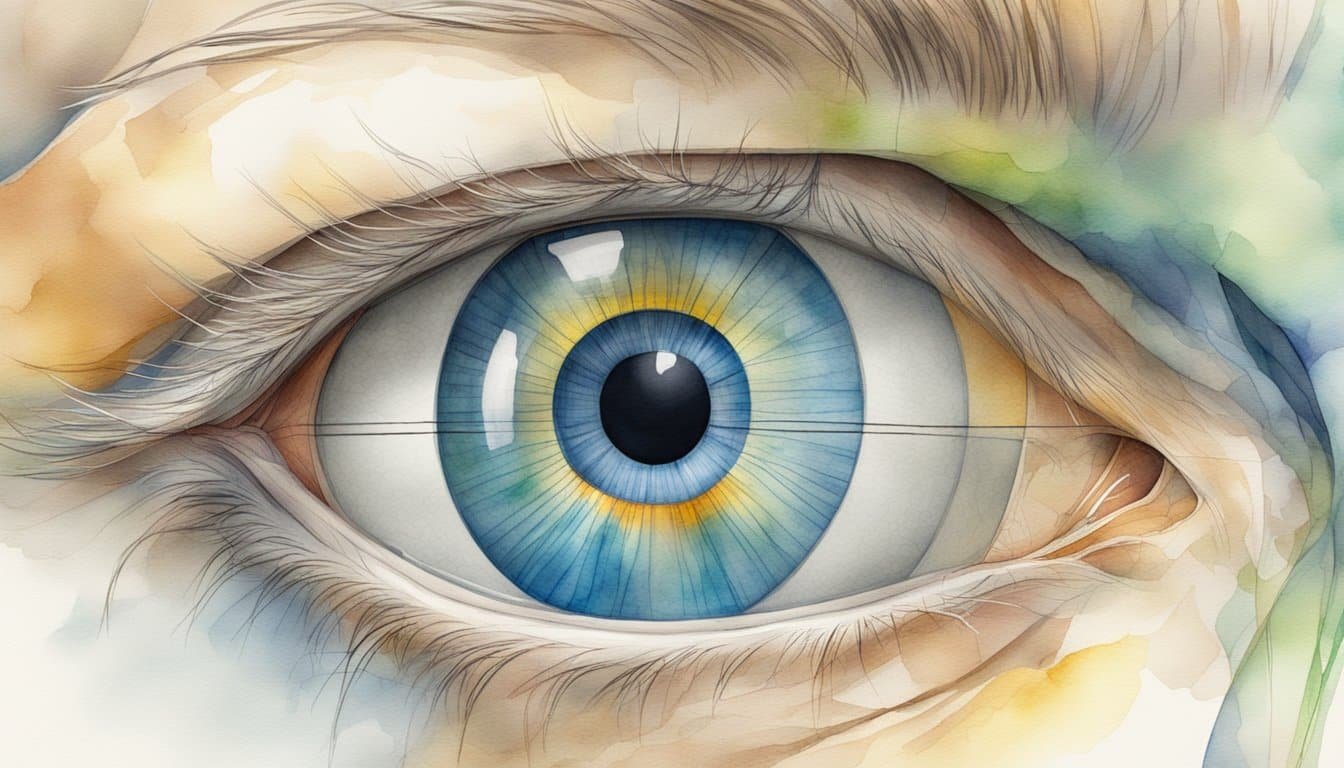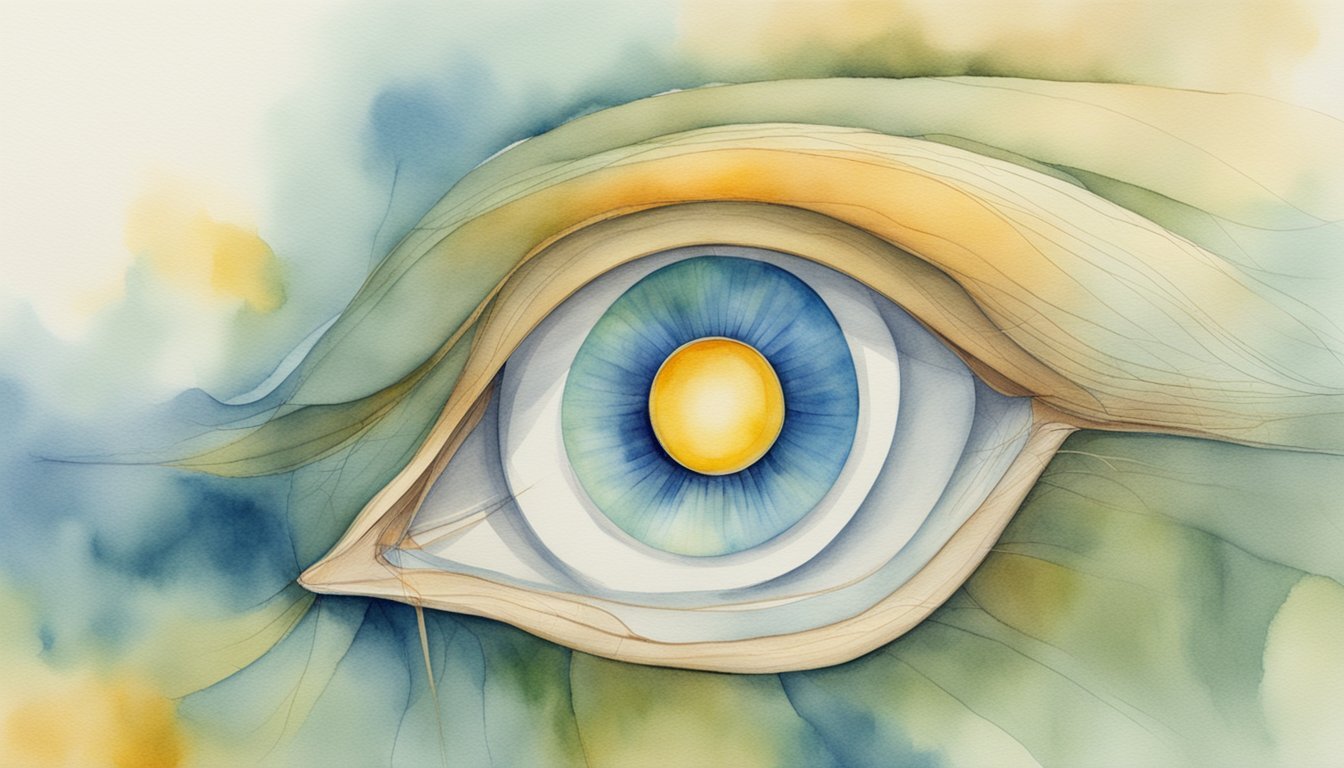Understanding the Blind Spot
Delving into the intricacies of the human eye reveals its remarkable complexity. The blind spot is a small area of the visual field that corresponds to a lack of light-detecting photoreceptors on the retina where the optic nerve passes through to connect to the brain.
Anatomy of the Eye and Vision
The human eye functions similarly to a camera, with each component playing a crucial role in allowing one to see the world. At the back of the eye lies the retina, a layer laden with photoreceptors known as cones and rods. Cones are responsible for color vision and work best in bright light, while rods are more sensitive and allow vision in dim light.
The Role of the Optic Nerve in Vision
Information captured by the retina is transmitted to the brain via the optic nerve. This crucial cable of nerve fibers carries visual signals from the photoreceptors to the area of the brain that processes them, enabling one to perceive their surroundings. The optic chiasm is the part of the brain where the optic nerves partially cross, contributing to depth perception and the field of vision.
What is a Blind Spot?
The blind spot, or physiological blind spot, is the spot on the retina devoid of photoreceptors, as this is where the optic nerve exits the eye and heads to the brain. The brain fills in this gap with surrounding details and a continuity of the background pattern, which is why most people do not notice their blind spot during daily activities. Specific tests can be designed to find the blind spot of the right eye, by illustrating its shape and size for research and understanding vision phenomena.
Common Causes and Concerns

The eye is a complex organ, and the appearance of a blind spot, or scotoma, can be unsettling. This section dives into the various types of scotomas, the health conditions that can lead to these vision disturbances, and when it’s time to seek professional advice.
Types of Scotomas
Scotomas are partial losses of vision or areas of diminished vision within the visual field. The most common types are:
- Central Scotoma: Affects the central vision and can be linked to age-related macular degeneration.
- Paracentral Scotoma: Located around the central vision, often associated with conditions like glaucoma.
Health Conditions Related to Blind Spots
Many eye diseases and health issues can result in scotomas:
- Diabetic Retinopathy: Damage to retinal blood vessels due to high blood sugar levels.
- Glaucoma: Increased pressure in the eye leading to optic nerve damage.
- High Blood Pressure: Can cause hypertensive retinopathy, and consequently vision changes.
- Multiple Sclerosis: May lead to optic neuritis, inflammation of the optic nerve, causing temporary blind spots.
- Retinal Detachment: An emergency situation where the retina peels away, creating permanent vision loss.
When to Consult a Doctor?
If there’s a change in vision or the appearance of new vision disturbances, prompt evaluation by a doctor is crucial. Particularly, if one experiences:
- Sudden onset of scotomas.
- Progressive changes in the visual field.
- Accompanying symptoms, like pain or headache.
It is essential to identify the underlying cause of a blind spot early to manage the condition effectively and preserve vision.
Diagnosis and Management

When one thinks about a blind spot, they might envision a tiny, inconspicuous dot in their field of vision. But for some individuals, this can be an indicator of underlying eye conditions or even neurological issues. Let’s uncover how blind spots are detected and the strategies to manage them.
Identifying Blind Spots through Tests
The first step in diagnosis normally involves a visual field test, which helps doctors map out the complete area of space visible to the eye when it is focused on a central point. This test can reveal blind spots known as scotomas that can’t otherwise be detected by the patient. For instance, the visual field test might identify a positive scotoma, an area where vision is lost or altered, often surrounded by a zone of normal vision.
For someone experiencing flashing lights or dark spots, an eye doctor may order tests to rule out conditions such as migraine or retinal detachment. These symptoms could also indicate issues with the blood vessels in the retina, potentially caused by diabetes or a stroke.
Treatment Options and Coping Strategies
Once diagnosed, managing a blind spot is tailored to its cause. If a condition like diabetes is at the root, then controlling blood sugar is crucial. In other cases, eye exercises may help the brain compensate for the blind spot by strengthening the surrounding areas of vision.
For those whose blind spots are caused by a temporary condition such as a migraine, the key is often addressing the stress that may trigger these episodes. If the blind spot is persistent, one’s brain typically compensates for it, and the individual learns to adapt their field of vision to minimize its impact.
On the more direct treatment front, if a blind spot is attributed to a disease affecting the photoreceptor cells or nerve fibers in the eye, an ophthalmologist may prescribe treatments varying from eye drops to more advanced therapy, depending on the condition and its progression.
Some fascinating approaches are being researched, such as enhancing color vision and night vision to work around blind spots. Healthcare providers continue to explore new avenues, understanding that the eyes are complex organs with the amazing ability to adapt and function despite challenges.
Discover more about Diagnostic and therapeutic challenges for conditions that manifest as visual field defects or read about the supporting role of multifocal ERG in the characterization of outer retinal function in conditions such as Acute Idiopathic Blind Spot Enlargement Syndrome. For a comprehensive view on neuro-ophthalmology, Neuro-ophthalmology e-book: Diagnosis and management is your go-to resource. Moreover, the diagnosis and treatment options for dry eye disease might provide insight into how various eye conditions are approached. Finally, take a look at new cases of Acute idiopathic blind spot enlargement syndrome to understand how this condition is being addressed today.

